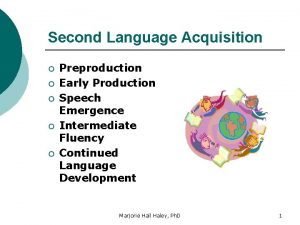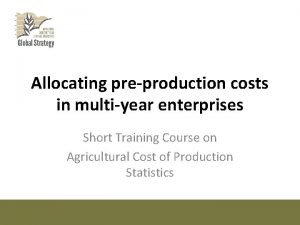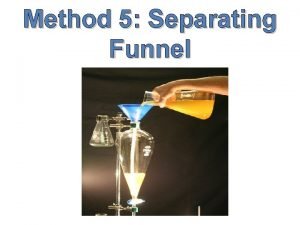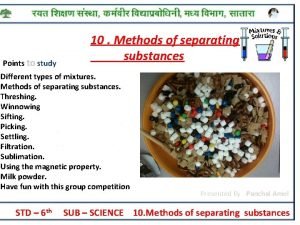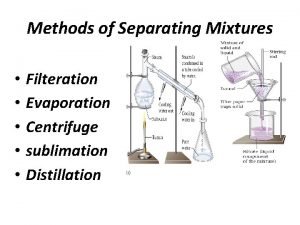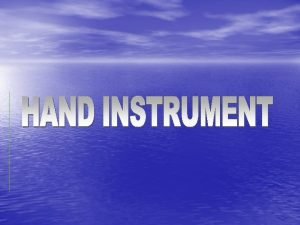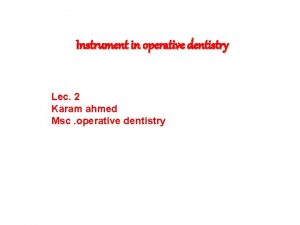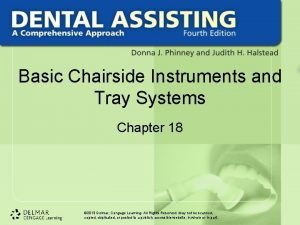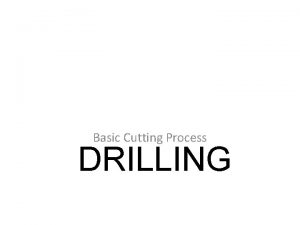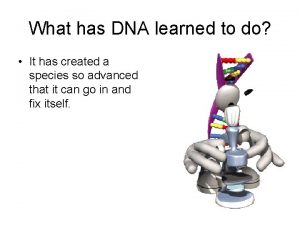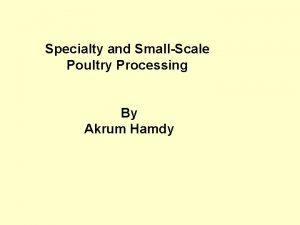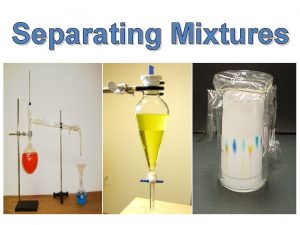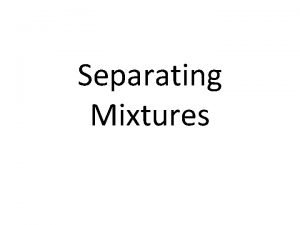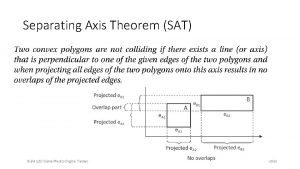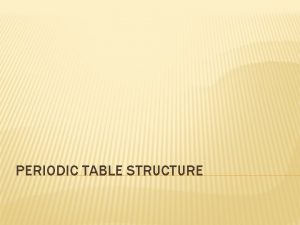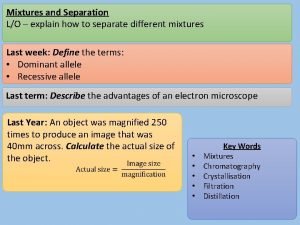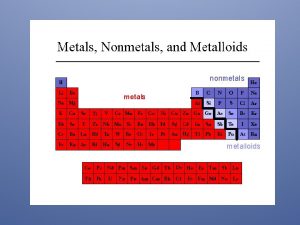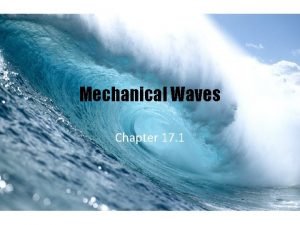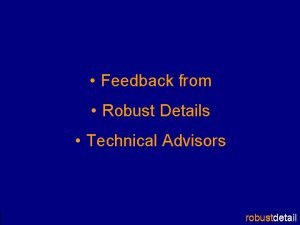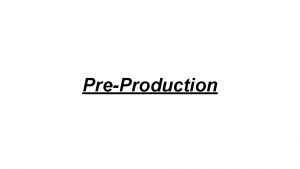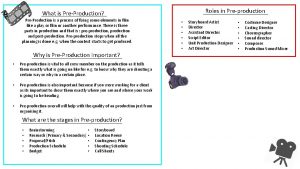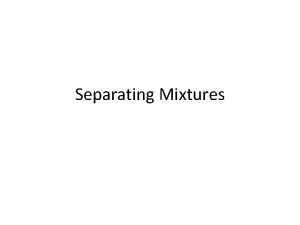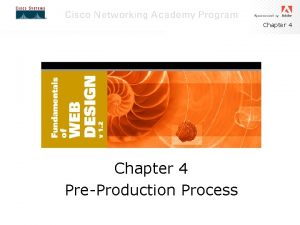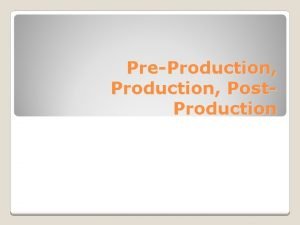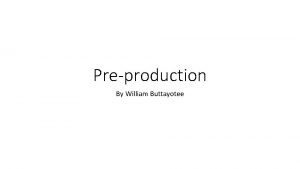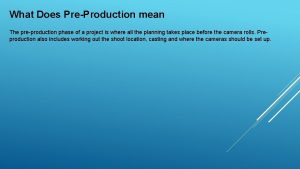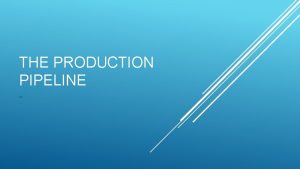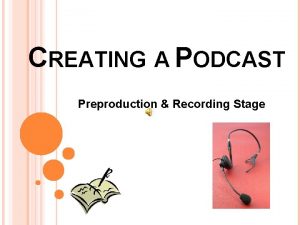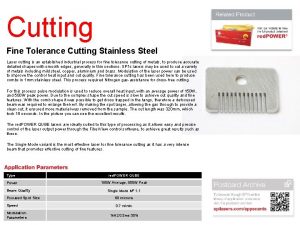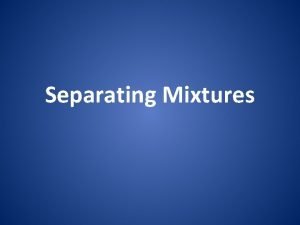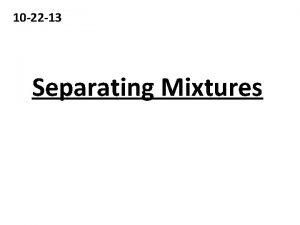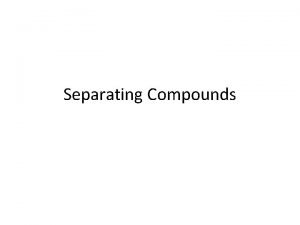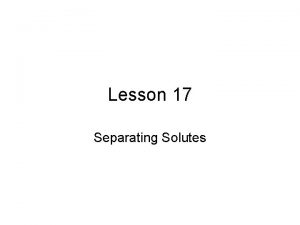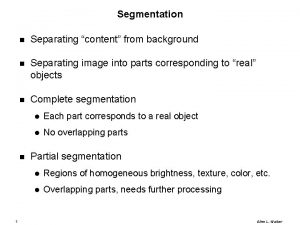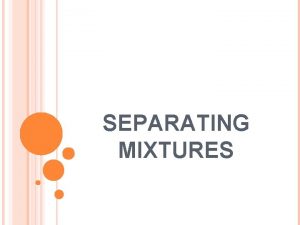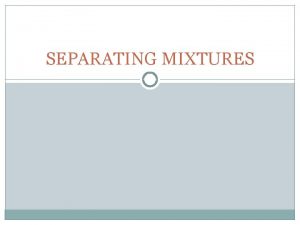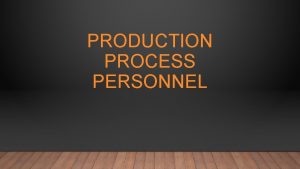Cutting Cutting is a preproduction process of separating

























- Slides: 25

Cutting

Cutting is a preproduction process of separating a spread into garment parts that are of precise size and shape of pattern pieces on a marker. Cutting Quality: Cutting contributes to the quality, efficiency and cost of subsequent operations, including handling, fusing and sewing. It can be judged by the accuracy and condition of cut edges and precision of cut garment parts.

Accuracy: Accurate cutting facilitate sewing and improve cutting quality. Inaccurate cutting may cause sewing operator to compensate by stretching or easing to make adjoining parts the same length. Factors that cause cutting inaccuracies are ØWide or vague lines on the marker ØImprecise following of lines on the marker ØVariation in cutting pitch ØShifting of the spread ØFabric bunching up or pushing ahead of the knife ØImproper equipment ØImproper cutting sequence as parts are cut.

Cutting pitch: It is the angle at which the cutting device contacts the spread. Maintaining the cutting device at vertical position with pitch of 90 degree create uniformity. Condition of cutting edges: Smooth edges and precise corners are easier to align and position during the sewing operations. Edges that are frayed, jagged, scratched and fused are difficult for operators to pick up, align and sew accurately. The condition of edges is affected by §Appropriateness of cutting equipment §The shape being cut §Condition of the equipment

Cutting Equipments: There are two major types of cutting equipments: ØOperator controlled cutting systems ØAutomatic, Numerically controlled cutting systems

Operator controlled cutting systems Hand Shears Portable cutting machine ØVertical straight knife ØRotary knife §End cutter Stationary cutting machines ØBand knife ØDie Cutter Servo cutting machine Specialized cutting machine ØStripe cutting machine Automatic cutting systems ØAutomatic blade cutting ØLaser cutting ØWater jet cutting ØPlasma jet cutting

Operator controlled cutting systems Manually operated systems depend on the skills of operator to position, manipulate and guide the fabric or cutting device. Operator controlled equipment may be portable or stationary. Hand shear: ØIt is used normally for cutting of single or double plies ØThe lower blade passes under the plies and distortion of fabric might be occur. ØBoth left handed and right handed shears are available ØDisadvantage of method is time consumption and consequent high labor cost per garment so not used at mass level ØIt is useful for made to measure garments

Portable Cutting Machines: Portable knives can move to and through a spread by an operator. There are two types §Vertical reciprocating straight knives §Round knives Structurally and mechanically the two types of the machine share many similarities Both types have the base plate, power system, operating handle, cutting blade, sharpening device and blade guard.

Vertical straight knife cutting machine: ØIt is used where the quantities for cutting does not justify purchase of computer controlled system. ØIt is versatile and blade has a vertical cutting action. ØThe element of knife are base plate usually on rollers for ease of movement, an upright or stand carrying a straight or vertical blade and an electric motor, a handle and a sharpening device. ØThe cutting blades are available with different edge characteristics like straight edge blades, wavy edge blades, saw type and coated blades.

ØThe base plate slides under the bottom most layer of fabric. ØVarious types and sizes of base plates are available such as small, medium and large. ØBlade height vary from 4 to 14 inches. ØThe 90° angle of blade to the cutting surface make it suitable for accurately cutting sharp corners, angles and curves. ØThe greater the blade movement, the faster the blade cuts the fabric and more rapidly and easily the operator can push the machine

Rotary or Round Knife Cutting Machine: ØIt can be identified by round blade that cuts with a downward turn at leading edge. ØThe element of machine are base plate, electric motor, a handle and a circular blade. ØThe cutting capacity is determined by the radius of blade, motor size and speed. ØBlade diameter vary from 2. 25 to 8 inches.

ØIt can not be used around tight curves and sharp edges. May be used for large radius curves. ØThis is not suitable for cutting curved lines in high lays because the blade does not strike all the plies simultaneously at the same point as the vertical point does. Therefore it is used only to cut straight lines.

Rotary or Round Knife Cutting Machine (End Cutter): ØThe element of end cutter are same as round knife machine except base plate including a rail onto which the cutting head moves back and forth on the cutting table, lifting mechanism to lift the rail after cutting each ply. ØThis is used to cut single ply during spreading process. Used only for straight cuts.

Operator Controlled Cutting Systems: Stationary Cutting Machines: ØStationary cutters are those cutting machines that have blades that remain in fixed position ØThe two types of stationary cutters are band knife and die cutters ØOperator must move the fabric to the machine for cutting action

Band Knife Machine: ØIt comprises a series of three or more pulleys, an electric motor with a continuously rotating steel blade mounted on them. ØOne edge of the blade is sharpened. ØThe band knife passes through a slot in the cutting table in a fixed position and the section of the lay to be cut is moved pass it. ØThe operator position and guide the fabric around the knife.

ØPieces to be cut are first cut on a block and then cut exactly on band knife. ØHeavy cardboard may be placed on top of a section block to provide a guide for cutting specific shapes. ØBand knives are used for highly accurate cutting. ØBand knife blade is finer and narrower than reciprocating blades so they can be used to cut tight curves.

Die Cutting: ØDies are preshaped metal outlines with one cutting edge. Die cutting involves uses of a die to cut out a specific garment part or trim from a single piece or small block of fabric. ØDie cutting involves placement of fabric, positioning the die on the fabric and engaging the machine to press the die on the fabric. ØDies can also be used to cut parts from centre of fabric ØDie cutting is labor intensive when dies placed manually. ØOnly a small area of fabric cut at one time and die must be repositioned each time.

Servo cutting machine: ØIt is between manual and automatic cutting machines. ØThis machine has servo motor with adjustable speed and a system that supports the knife perpendicular to cutting table. ØIt can combine vertical cutting and band knife cutting in one machine.

Specialized Cutting Machines: Stripe cutter: ØStripe cutter may cut or cut and roll stripes or bindings from knit tubular yardage, cut bias stripes from woven. ØStripe cutter is used to measure and cut lengths of material as ribbon, tape, elastic and strapping.

Automatic Cutting Machines: Automatic blade cutting: ØThese are used to cut large number of plies with great accuracy and speed. ØInformation can be sent directly to the cutting machine. ØThe central control unit operates the components such as cutting head, cutter carriage, knife sharpening and conveyorized cutting table. ØAutomatic knife sharpening is done at intervals during cutting. ØThe reciprocating blade can be adjusted to the height and density of fabric

Laser Cutting: ØLaser cutting focuses a powerful beam of light projected onto a minute area to cut fabric. The fine V shaped beam is only 0. 004 of an inch. The beam cuts without pressure on the fabric which is a major advantage for some types of fabrics. The fabric remain immobile during cutting. ØLaser cut with high speed, accuracy and multidirectional ability but with some heat emission. ØThe heat produce can seal fabric edges which can be advantage for fabric that ravels and disadvantage for cutting multiple plies as edges fuse together. ØThe handling operation of laser cutting is labor intensive as well as parts must be handled individually.

Water Jet cutting: ØIt is computer operated multidirectional cutting method. ØWater jet cutting is done by propelling a tiny jet of water(0. 0010 -0. 0015 inch) through the fabric at very high pressure (70, 000 pounds per square inch) ØThe forward edge of the jet stream shears the fabric as it moves along the cutting line but does not wet the fabric. ØIt can cut multiple plies without fusing but it can fray and tangle the yarns of some fabrics. ØIt is used when heat build up is avoided but water absorption is not important. ØAt present time its uses are limited to cut leather and vinyl fabrics.


Plasma Jet Cutting: ØIt is computer operated, high speed, single ply cutting device that offers same features as laser cutting but at lower price. ØATV camera reads the fabric on the conveyor and a digital image processor decides the best way to match and lay out the pieces based on predetermined matching rules.

Cut parts identification: It involves identifying and marking parts for further operations. Through out the sewing operation it is essential that each garment be assembled from the parts that have been cut from the same ply of the fabric, which is ensured by shade marking each piece in the lay. Ticketing: Each piece or garment part is ticked with a style number, size and ply number. Plies are numbered sequentially. Garment parts are grouped and bundled for the specific production system to be used.
 Speech emergence
Speech emergence Preproduction costs
Preproduction costs Paper chromatography principle
Paper chromatography principle Sublimation process
Sublimation process Centrifuge separating mixtures
Centrifuge separating mixtures Cutting tools in sewing with pictures and meaning
Cutting tools in sewing with pictures and meaning The sterilizing gas used in chemiclaves is
The sterilizing gas used in chemiclaves is Modified pen grasp
Modified pen grasp Dental bur
Dental bur Single point cutting tool drawing
Single point cutting tool drawing Drilling definition
Drilling definition Theory of metal cutting mcq
Theory of metal cutting mcq Separating dna
Separating dna Separating eggs techniquies
Separating eggs techniquies Is maple syrup a pure substance
Is maple syrup a pure substance Why is it important to separate mixtures
Why is it important to separate mixtures Evaporation separation examples
Evaporation separation examples Example of using magnet in separating mixtures
Example of using magnet in separating mixtures Separating axis
Separating axis Periodic table separating metals and nonmetals
Periodic table separating metals and nonmetals Natural science grade 7 term 2 practical tasks
Natural science grade 7 term 2 practical tasks Pure substance
Pure substance Periodic table separating metals nonmetals and metalloids
Periodic table separating metals nonmetals and metalloids A wave that travels along the surface separating two media
A wave that travels along the surface separating two media Robustdetails
Robustdetails A sign separates items in a list
A sign separates items in a list
